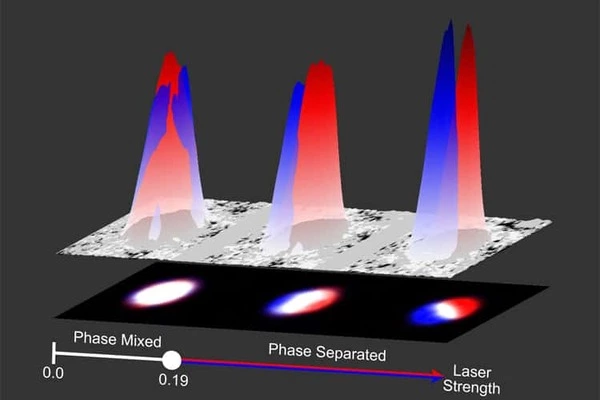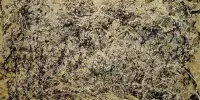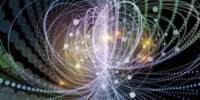The coldest systems in the universe were used by researchers to realize in the laboratory gauge theories, key models of modern physics that describe the fundamental forces of Nature and the behavior of complex quantum materials.
Gauge theories are mathematical models from theoretical physics that describe the interactions of elementary particles (such as electrons or quarks) and explain quantum mechanically three of nature’s fundamental forces: electromagnetic, weak, and strong forces.
Gravity, the fourth fundamental force, is described by Einstein’s theory of general relativity, which is also a gauge theory, though not fully understood in the quantum regime. Gauge theories, which are the workhorse of modern physics, can also be used to explain the exotic quantum behavior of electrons in certain materials or the error correction codes that future quantum computers will require to work reliably.
One possibility for better understanding these theories is to realize them using artificial and highly controllable quantum systems. This strategy is known as quantum simulation, and it is a subset of quantum computing. It was first proposed by the physicist Richard Feynman in the 80s, more than fifteen years after being awarded the Nobel prize in physics for his pioneering theoretical work on gauge theories.
We were not attempting to simulate a gauge theory when we observed the effect of chiral interactions in our atomic cloud for the first time. However, the data was so beautiful and intriguing that we felt we needed to learn more about it. It caused me to completely alter the team’s research plans
Leticia Tarruell
Quantum simulation can be compared to a quantum LEGO game in which experimental physicists bring abstract theoretical models to life. They construct them “quantum brick by quantum brick” in the laboratory, using highly controlled quantum systems such as ultracold atoms or ions. After assembling one quantum LEGO prototype for a specific model, the researchers can precisely measure its properties in the lab and use their findings to better understand the theory that it mimics.
Quantum simulation has been extensively used to investigate quantum materials over the last decade. Playing the quantum LEGO game with gauge theories, on the other hand, is fundamentally more difficult. Only the electromagnetic force could previously be investigated in this manner.
In a recent study published in Nature, ICFO experimental researchers Anika Frölian, Craig Chisholm, Ramón Ramos, Elettra Neri, and Cesar Cabrera, led by ICREA Prof. at ICFO Leticia Tarruell, in collaboration with Alessio Celi, a theoretical researcher from the Talent program at the Autonomous University of Barcelona, were able to simulate a gauge theory other than electromagnetism for the first time, using ultracold atoms.

A gauge theory for very heavy photons
The team set out to realize in the laboratory a gauge theory belonging to the class of topological gauge theories, different from the class of dynamical gauge theories to which electromagnetism belongs.
The electromagnetic force between two electrons arises in gauge theory language when they exchange a photon: a particle of light that can propagate even when matter is absent. However, in two-dimensional quantum materials subjected to extremely strong magnetic fields, photons exchanged by electrons behave as if they were extremely heavy and can only move for as long as they are attached to matter. As a result, electrons have very peculiar properties: they can only flow through the material’s edges, in a direction determined by the magnetic field’s orientation, and their charge appears fractional.
An ultracold cloud that does not behave as its mirror image
To give reality to this topological gauge theory and simulate it in their experiment, the team used a cloud of atoms cooled down to temperatures about a billionth of a degree above absolute zero. They chose potassium as an atomic species because one of its isotopes has two states that interact with different strengths and can be used as quantum bricks to build the chiral BF gauge theory. They then used laser light to merge the two states into one new one.
This technique, known as “dressing the atoms with light,” caused them to acquire strange interactions, the strength and sign of which depended on the velocity of the cloud. Finally, they devised an optical waveguide to confine the atoms’ motion to a straight line, and they used additional lasers to kick the cloud and cause it to move at different speeds along it.
In normal conditions, letting the atoms evolve freely in the waveguide would have resulted in the cloud expanding. However, with the dressing light on, the images of the atoms taken in the laboratory showed a completely different behavior. As Ramon Ramos explains, “in our system, when the atoms move to the right their interactions are attractive and cancel the behavior of the atoms trying to expand. So, what you actually see is that the shape of the cloud remains the same. In technical words, we realized a soliton. But, if the atoms move to the left, these atoms expand like normal gas.”
The observation of atoms that behave differently when moving in opposite directions demonstrates that the system is chiral, that is, different from its mirror image. “We were not attempting to simulate a gauge theory when we observed the effect of chiral interactions in our atomic cloud for the first time. However, the data was so beautiful and intriguing that we felt we needed to learn more about it. It caused me to completely alter the team’s research plans” Leticia Tarruell says.
The team quickly figured out that their observations were connected to a theoretical article published ten years earlier, which proposed to use an almost identical setup to study a modified type of electromagnetism. However, the results of the experiment never seemed to agree with their expectations. As Craig Chisholm recalls, initially “the results that we were obtaining did not seem at all aligned with any of the theory. The challenge was to understand which regime you had to be in to actually see the correct effect coming from the correct place and to eliminate the effect coming from the wrong place.”
A very fruitful experiment-theory collaboration
Reading the original gauge theory papers was simple for theoretical physicist Alessio Celi, who had previously worked on high-energy physics and gravity before switching to quantum simulation. At the same time, he could comprehend the regime in which the experiments could be carried out, as well as their difficulties. He met with the experimental team and developed a model that could adequately explain the experimental results after several discussions. As he puts it, “The main issue we had was getting into the right framework. It was a simple problem to solve once you knew where to look.”
The team is already planning to investigate the new research avenues opened up by this project. Their current goal is to try to expand the experiments and theory from a line to a plane, allowing them to observe the fractional quantum Hall effect without the use of a quantum material. This would allow access to exotic quasi-particles known as anyons, which could be used in the future for more robust forms of quantum computing.
















